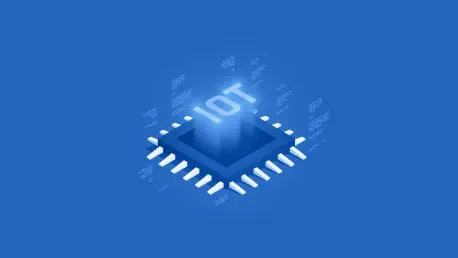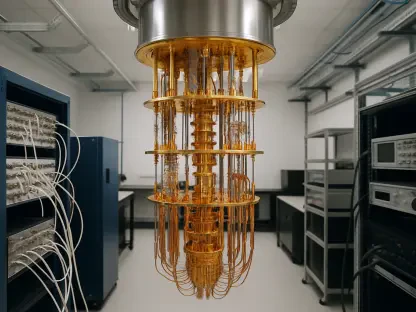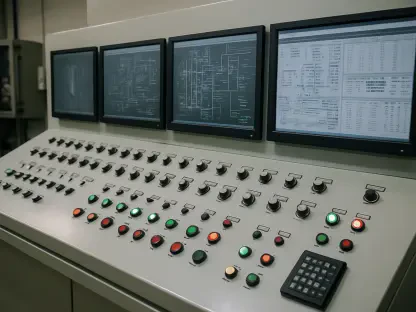Edge controllers are rapidly gaining traction across various industries, promising to revolutionize the technological landscape. Their impact on efficiency, data processing, and automation is profound, positioning them as a cornerstone in the future of technology.
Understanding Edge Controllers
What Are Edge Controllers?
Edge controllers serve as the bridge between IoT devices and central processing systems, optimized for real-time data management and control. They streamline operations by processing data closer to the source, effectively reducing latency and enhancing response times. Unlike traditional centralized systems that rely heavily on cloud infrastructure, edge controllers enable quicker decision-making by processing data on-site. This approach is particularly beneficial in environments where immediate actions are necessary, such as in automated manufacturing lines and autonomous vehicles. By reducing the reliance on far-off data centers, edge controllers ensure that critical operations continue smoothly, even in the event of connectivity issues.
The integration of edge controllers into modern technological ecosystems marks a significant shift from the conventional centralized data processing paradigm. These controllers bring intelligence to the edge of networks, allowing for decentralized data handling that aligns with the growing demands of real-time applications. As a result, industries can maintain higher operational efficiency and reliability. Additionally, edge controllers facilitate the seamless flow of information across the various components of an IoT framework, making them indispensable for the rapid technological advancements anticipated in the coming years.
The Role of Edge Controllers in Data Processing
Edge controllers enhance data accuracy and reduce latency by localizing data processing. This is vital for applications demanding real-time responses, such as automated manufacturing lines and autonomous vehicles. By processing data at the source, these controllers minimize the time it takes to transmit data to and from central servers, ensuring that actions can be executed without delay. In industries where milliseconds can make a significant difference, such as in manufacturing or vehicle automation, this reduction in latency is crucial for maintaining high performance and safety standards.
In addition to improving response times, edge controllers also enhance data accuracy by conducting initial data filtering and analysis on-site. This process ensures that only relevant data is sent to central systems for further processing, reducing the load on cloud infrastructure and enhancing overall system efficiency. Moreover, edge controllers can operate independently, allowing for uninterrupted data processing even if the connection to the central cloud is temporarily lost. This level of independence not only boosts reliability but also provides a robust safeguard against potential data transmission failures, making edge controllers an essential component in modern data-driven operations.
Key Transformations Driven by Edge Controllers
Enhancing Operational Efficiency
Edge controllers contribute significantly to operational efficiency. By minimizing data travel time, they ensure smoother, faster, and more reliable automation processes, which is indispensable in modern smart manufacturing. These controllers enable real-time monitoring and adjustments on the production floor, leading to optimized resource utilization and reduced downtime. In environments where precision and speed are critical, the latency reduction achieved by edge controllers translates directly into higher productivity and better product quality.
The implementation of edge controllers in manufacturing processes supports the shift toward Industry 4.0, where interconnected devices and systems drive intelligent production methods. Edge controllers serve as the nexus of this transformation, facilitating seamless communication between machines, sensors, and control systems. This interconnectedness allows for advanced predictive maintenance, where potential issues are identified and addressed before they cause significant disruptions. Consequently, manufacturing plants can operate more efficiently, with minimized interruptions and enhanced overall output, thereby maintaining a competitive edge in the fast-evolving industrial landscape.
Improving Data Security
In an era where data breaches are prevalent, edge controllers offer enhanced security measures. By decentralizing data processing, they reduce the risk of interception during data transfers, offering robust protection against cyber threats. Traditional data processing methods that rely heavily on central servers are vulnerable to attacks during data transmission. In contrast, edge controllers mitigate these risks by keeping sensitive data local, thus reducing the attack surface. This localized approach enhances security protocols and ensures that data remains protected even if other parts of the network are compromised.
Additionally, edge controllers can implement advanced security features tailored to specific use cases, such as encrypted data storage and secure boot mechanisms. These features further fortify the security of IoT devices and the data they handle. In industries like healthcare and finance, where the protection of sensitive information is paramount, edge controllers play a critical role in maintaining data integrity and ensuring compliance with stringent security regulations. By providing robust security measures, edge controllers not only safeguard data but also build trust among users and stakeholders in the increasingly digital and connected world.
Facilitating Smart Grids and Utilities
Edge controllers play a pivotal role in the modernization of power grids. They facilitate intelligent energy distribution and management, contributing to more responsive and adaptive utilities infrastructure. By enabling real-time monitoring and control of energy distribution systems, edge controllers ensure optimal performance and efficiency. This capability is especially crucial in managing the fluctuating demands of smart grids, where energy sources and consumption patterns can vary significantly throughout the day.
In addition to improving energy distribution, edge controllers also support the integration of renewable energy sources into the grid. By processing data from various sensors and IoT devices in real-time, they enable more precise management of renewable resources, such as solar and wind power. This integration ensures a balanced and stable energy supply, reducing reliance on traditional fossil fuels and enhancing the sustainability of power grids. Furthermore, edge controllers can quickly respond to changes in energy demand or supply, providing adaptive solutions that maintain grid stability and prevent outages. This responsiveness is vital for the continued development of smart cities and the broader adoption of environmentally-friendly energy solutions.
Technological Integration and Innovation
The Synergy With AI and Machine Learning
Edge controllers, when integrated with AI and machine learning, revolutionize decision-making processes. They enable devices to make informed decisions independently, thereby optimizing performance and predicting maintenance needs. By analyzing data locally using AI algorithms, edge controllers can identify patterns and trends that may not be immediately apparent through traditional data processing methods. This real-time analysis allows for proactive measures, such as scheduling maintenance before equipment failures occur, thus minimizing downtime and ensuring continuous operations.
The combination of edge controllers and AI also facilitates adaptive learning, where systems continually improve their performance based on historical and real-time data. This capability is particularly beneficial in dynamic environments, such as manufacturing plants or autonomous vehicles, where conditions can change rapidly. Edge controllers equipped with AI can adapt to these changes, making adjustments in real-time to optimize efficiency and safety. For example, in autonomous vehicles, edge controllers can process sensor data instantly, enabling the vehicle to respond to road conditions or obstacles without delay. This integration of AI with edge controllers not only enhances operational efficiency but also pushes the boundaries of what connected devices can achieve.
The Impact on IoT
The explosive growth of IoT devices demands efficient data handling, and edge controllers are up to the task. They provide real-time data analytics, essential for smart homes, wearable technology, and industrial IoT applications. By processing vast amounts of data generated by IoT devices locally, edge controllers alleviate the burden on central servers and minimize latency, ensuring that IoT systems respond quickly to user needs and environmental changes. This real-time capability is crucial for applications where immediate data insights are necessary for decision-making and actions.
Furthermore, edge controllers enable more scalable and resilient IoT ecosystems. As the number of connected devices continues to grow exponentially, centralized systems struggle to keep up with the increasing data volumes. Edge controllers address this challenge by distributing processing tasks across the network, leading to better load management and reduced congestion. This decentralized approach not only enhances the overall performance of IoT systems but also ensures their reliability and robustness. Industries ranging from healthcare, where real-time patient monitoring is vital, to smart cities, where efficient management of resources and services is paramount, benefit from the integration of edge controllers with IoT, paving the way for innovative and responsive technological solutions.
Sector-Specific Transformations
Advancements in Manufacturing
In manufacturing, edge controllers facilitate the shift towards Industry 4.0. They enable real-time monitoring and control of production lines, enhancing both product quality and operational flexibility. By providing localized processing power, edge controllers allow manufacturers to implement advanced automation systems that can adapt to changing conditions on the fly. This adaptability is crucial in an industry where precision and efficiency are key determinants of success. Edge controllers also support predictive maintenance strategies, where data from sensors and machines are analyzed in real-time to identify potential issues before they lead to costly downtime.
The adoption of edge controllers in manufacturing also contributes to improved product quality. By analyzing data from production processes in real-time, edge controllers can detect anomalies and deviations from desired standards, allowing for immediate corrective actions. This capability ensures that products meet stringent quality requirements, reducing waste and rework. Moreover, the ability to process data locally enhances the speed and accuracy of quality control checks, leading to more consistent and reliable outcomes. As manufacturers continue to embrace digital transformation, the role of edge controllers in driving efficiency, flexibility, and quality becomes increasingly important, positioning them as a pivotal technology in the future of manufacturing.
The Future of Autonomous Vehicles
Autonomous vehicles rely heavily on rapid data processing. Edge controllers ensure timely responses to environmental stimuli, enhancing safety and efficiency on the road. By processing sensor data on-board, edge controllers enable autonomous vehicles to make split-second decisions necessary for safe navigation and collision avoidance. This capability is especially critical in scenarios where even minor delays in data processing can lead to accidents or unsafe conditions.
The integration of edge controllers in autonomous vehicles also supports advanced driver-assistance systems (ADAS), which enhance driver safety and convenience. These systems rely on real-time data from various sensors, cameras, and radar to provide functionalities such as lane-keeping assistance, adaptive cruise control, and automatic emergency braking. Edge controllers process this data locally, ensuring swift responses that enhance the overall driving experience. As autonomous vehicle technology continues to evolve, edge controllers will play a central role in enabling the advanced functionalities and safety features that define the future of transportation. Their ability to deliver real-time data processing and decision-making capabilities is essential for the development and deployment of reliable and efficient autonomous vehicles.
Healthcare Innovations
Edge controllers are transforming healthcare by enabling real-time patient monitoring and rapid data analysis. This allows for quicker, more accurate diagnoses and personalized treatments. By processing health data locally, edge controllers provide immediate insights into a patient’s condition, enabling healthcare providers to respond swiftly and effectively. This capability is particularly beneficial in critical care scenarios, where timely interventions can be life-saving. For instance, wearable devices equipped with edge controllers can continuously monitor vital signs and detect abnormalities, alerting medical professionals to potential issues in real-time.
In addition to improving patient care, edge controllers also enhance the efficiency of healthcare operations. They enable the seamless integration of various medical devices and systems, facilitating the efficient flow of data across healthcare networks. This interconnectedness supports comprehensive patient records and coordinated care, reducing the likelihood of errors and improving overall treatment outcomes. Moreover, the ability to process data locally ensures that sensitive health information remains secure, addressing concerns about data privacy and compliance with regulatory standards. As the healthcare industry continues to embrace digital transformation, the role of edge controllers in driving innovation and improving patient outcomes becomes increasingly significant.
Challenges and Opportunities
Overcoming Interoperability Issues
The lack of standardized protocols in edge controller deployment poses a challenge. Ensuring compatibility across diverse systems and devices is crucial for seamless integration. Without standardized protocols, different components within an IoT ecosystem may struggle to communicate effectively, leading to inefficiencies and potential failures. Addressing these interoperability issues requires collaboration among industry stakeholders to develop and adopt common standards that facilitate smooth integration and operation of edge controllers across various platforms and applications.
In response to these challenges, industry consortiums and standard-setting organizations are working on developing guidelines and frameworks to ensure interoperability. These efforts aim to create a cohesive ecosystem where edge controllers can seamlessly interact with other devices and systems, regardless of manufacturer or specific use case. By establishing standardized communication protocols and interfaces, the industry can overcome the barriers to widespread adoption of edge controllers, enabling more efficient and reliable IoT deployments. As these standards become more widely accepted, the potential for innovative applications and solutions will continue to expand, driving further advancements in edge computing technology.
Opportunities for Growth and Development
Edge controllers are swiftly becoming a vital component in numerous industries, heralding a significant transformation in the technological realm. These devices are designed to process data closer to the source, significantly enhancing data processing speeds and overall efficiency. Unlike traditional systems that rely heavily on central data centers, edge controllers offer localized processing power, which can lead to faster decision-making and real-time automation.
The benefits of edge controllers extend beyond just efficiency. They also play a crucial role in improving the reliability and security of data. By minimizing the distance data has to travel, the risk of interception and latency issues are substantially reduced. This makes edge controllers particularly valuable in sectors where real-time data processing is critical, such as in healthcare for patient monitoring, manufacturing for automated systems, and smart cities for efficient infrastructure management.
Additionally, the integration of edge controllers with artificial intelligence and machine learning algorithms further amplifies their capabilities, enabling advanced predictive analytics and smarter automation. As industries increasingly adopt these innovative devices, edge controllers are poised to become a cornerstone in the future of technology, driving forward the next wave of technological advancements and shaping the landscape of modern industry.









